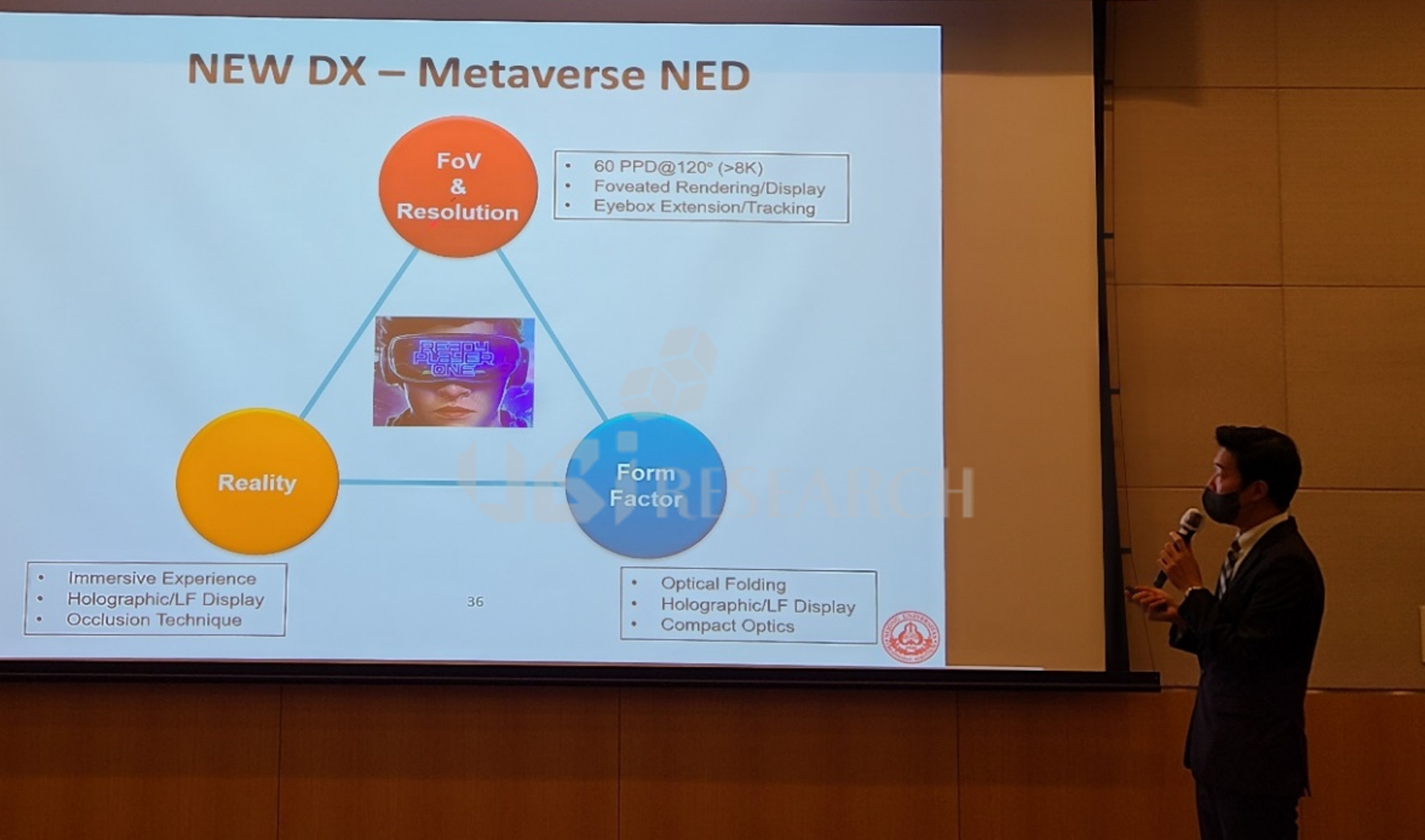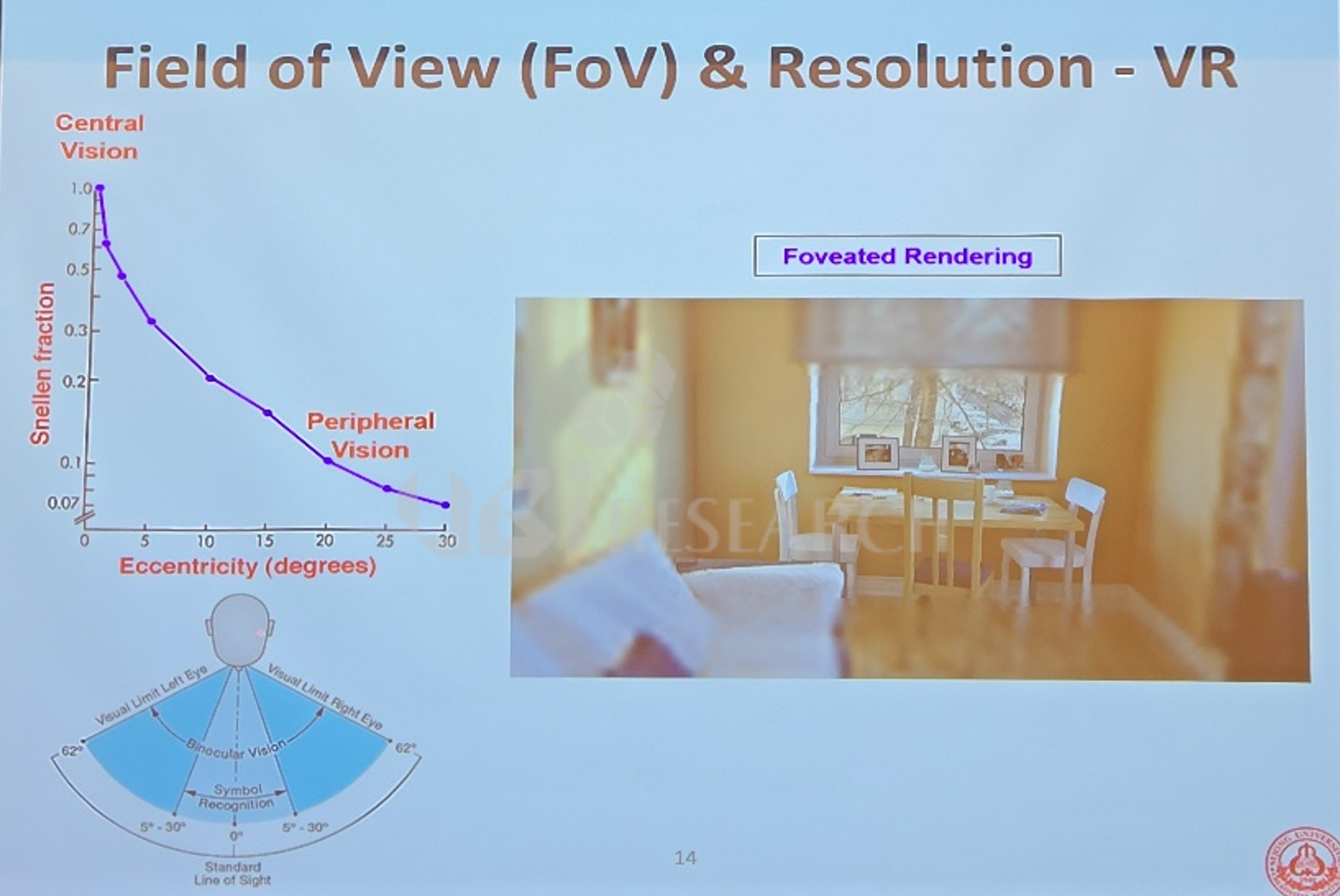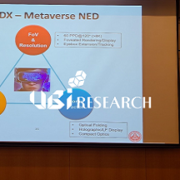Micro-display’s Challenges From Three Perspectives [2022 Second Half OLED Seminar]

Professor Hee-Jin Choi of Sejong University, Display and Optical Technology for Realizing Ultra-Realistic Near Eye Display
(Second half of 2022 OLED Seminar)
At the ‘The Second Half of 2022 OLED Accounting Seminar’ held at the FKI in Yeouido on November 9, Professor Hee-Jin Choi of Sejong University made a presentation on the theme of ‘Display and Optical Technology for Realizing Ultra-Realistic Near Eye Display’. Professor Heejin Choi analyzed the tasks that next-generation micro-displays must be solved from three perspectives: ‘FoV & Resolution’, ‘Reality’, and ‘Form Factor’.
First, Professor Hee-Jin Choi explained that from the perspective of ‘FoV & Resolution’, the micro-display resolution standard should be applied to PPD (Pixels per degree), which is affected by the viewing angle, rather than PPI (Pixels per inch) applied to general displays. Professor Heejin Choi said, “Based on visual acuity of 1.0, a resolution of 60 PPD or higher must be satisfied for the screen door effect to not appear. 60 PPD is the same resolution as 8K and it is very difficult to achieve on a small screen.”

Professor Hee-Jin Choi of Sejong University, Display and Optical Technology for Realizing Ultra-Realistic Near Eye Display
(Second half of 2022 OLED Seminar)
Professor Choi Hee-jin mentioned the visual characteristics that do not recognize the surroundings outside the center of the screen as a way to solve this problem, and emphasized, “Foveted Rendering” technology that applies high resolution only to the center of the screen and low resolution to the periphery can efficiently shorten the rendering time.” Subsequently, he explained that the problem of AR display, which varies the path of light and the position of the eye, can be solved with multiple output rays and eyebox extension technology.

Professor Hee-Jin Choi of Sejong University, Display and Optical Technology for Realizing Ultra-Realistic Near Eye Display
(Second half of 2022 OLED Seminar)
Regarding the second point of view, ‘Reality’, he noted that multi-focus is needed for the realism of AR displays, saying, “Considering human vision, between 10 and 12 focusing sections are needed to implement realistic AR displays. “Currently, two focusing sections can be implemented with the current technology, and research is underway to implement four focusing sections.
Finally, regarding the ‘Form Factor’ perspective, Professor Choi said, “The form factor is the least advanced compared to other technologies. The form factor of micro-display is still quite thick and heavy. The ultimate goal of the micro-display form factor is the weight and size of the glasses.”
“It is possible to reduce the thickness of the device by applying a simple optical system and optical folding technology. However, there was a disadvantage of poor light efficiency and brightness. There are many trade-offs in the optical world. Many researchers are actively working on research to solve this problem,” he said at the end of the presentation.
He concluded, “We were able to reduce the thickness of the device by applying a simple optical system and optical folding technology, but there were disadvantages in terms of light efficiency and brightness. In optics, there are many conditions that are in a trade-off relationship. Many researchers are actively conducting research to solve this problem”


 2022 Micro-display Technology Report Sample Download
2022 Micro-display Technology Report Sample Download